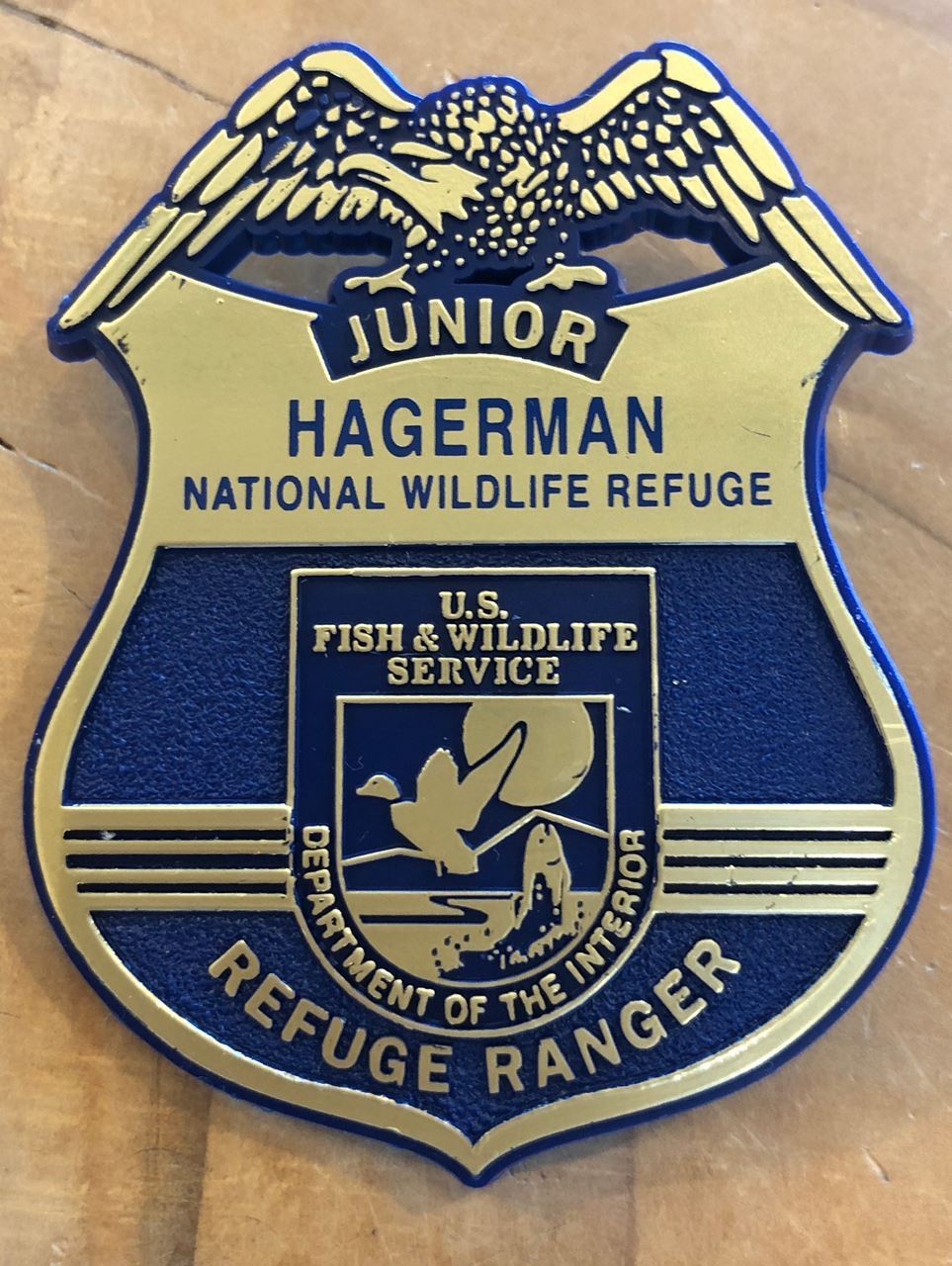Meyers Branch, Harris Creek, and Big Mineral Units will be closed to public entry and use on Dec 5-7 for the annual archery deer hunt. This includes Meadow Pond Trail, Raasch Trail, and Harris Creek Trail. Click Here for Details |
|
|
Plant of the Month Ruellia: A Plant of Many Virtues By Marnie Barnes Sadri 
Imagine a garden blessed with dazzling purple, trumpet-shaped blooms that return anew each morning for nearly five months of the year. Picture a plant that not only survives but thrives in Texas heat and humidity, and even tolerates drought with ease. Envision a garden companion that settles in gently—never crowding its neighbors, even after many years. Now, add the delight of knowing this same plant provides food for butterflies such as the Common Buckeye and the Wood Nymph, while also serving as a nectar source for pollinators and the occasional hummingbird. Best of all, it flourishes in sun, shade, or anything in between, returning faithfully each spring like an old friend. Meet my favorite: Ruellia drummondiana. Several Ruellia species are native to Texas and do well in DFW gardens, including Ruellia nudiflora (Common Wild Petunia), Ruellia occidentalis (Western Wild Petunia), Ruellia humilis (Prairie Petunia), and Ruellia caroliniensis (Carolina Petunia). But only one species is endemic to Texas—occurring nowhere else in the world: Ruellia drummondiana, or Common Wild Petunia. It was named for Scottish naturalist Thomas Drummond, who collected and cataloged plants across Texas in the early 1800s, particularly around the Edwards Plateau and Brazos River region. Though it is concentrated in the Edwards Plateau, Drummond’s Ruellia can also be found in the Cross Timbers, Blackland Prairie, and even parts of the DFW area. I first discovered it nearly 20 years ago on the edge of my Denton garden, then a heavily wooded, undeveloped lot. At first I mistook the ovate-leaved newcomer for a weed and pulled it up—only to have it reappear. A year or two later, when the plant revealed its striking blooms, I began to understand its charm. Unlike R. nudiflora, whose flowers cluster at the tops of its stems, Drummond’s flowers bloom gracefully along the main stem where the leaves meet, creating a lovely layered effect. Around the same time, I noticed Buckeye butterflies lingering near it—only later learning that Ruellia drummondiana is in fact the larval host for the species. Through the seasons, I observed how adaptable it was: thriving equally well in full sun alongside prickly pear, or in the deep shade beneath redbuds and post oaks. Unlike its more aggressive cousins, it produces only a few seeds per pod, preventing it from spreading invasively. This makes it a gentle, well-mannered addition to a native garden. That restraint is worth noting, because not all Ruellias are so considerate. Take Mexican Petunia (Ruellia simplex), for instance. With its tall, dark foliage and equally beautiful blooms, it may tempt gardeners—until it reveals its invasive nature, spreading aggressively by underground roots and explosive seeds, often overwhelming everything in its path. By contrast, Texas’s own Ruellia drummondiana is a true garden treasure: hardy, graceful, pollinator-friendly, and uniquely ours. For Texans—native or transplanted—it’s a plant well worth welcoming into the garden. |
Birding with Jack: The Weekly Bird Census
Wayne Meyer, Nancy Riggs, Jack Chiles, and Mike Petrick Each Tuesday a team of experienced birders, including Master Naturalist Jack Chiles, traverse 35 miles of refuge roads and hiking trails, documenting every bird they encounter. This Bird Census is reported to The Cornell Lab of Ornithology for use in research, and each week we will bring you a link to their actual bird count, and a summary of their adventures.
See the rest of Jack's notes and the latest Bird Census Results |
Photo Club Meeting:
Night Photography With Russel Graves
Saturday, November 15, 2025 at 1:00 in the Visitor Center
Russell has been called a rural renaissance man, recognized among the top photographers in Texas, and praised by editors, art directors, and audiences alike for his gift of connecting people with places.
All are welcome, membership and/or registration are not necessary.
Photo Contest Results will be announced at the November Second Saturday, on November 8, 2025 beginning at 10:00 AM
| Puddles' Craft Corner By Cindy Steele, Master Naturalist |
We’re Going Batty!
Welcome back to Puddles’ Craft Corner. Are you afraid of bats? Well, did you know that bats are afraid of you? These amazing mammals have long been misunderstood! In fact, bats actually help the environment and people by eating tons of flying insects that destroy crops and spread diseases. Bats also pollinate night flowers, such as cactus, and help spread seeds to create new fruit trees. They’re mysterious, nocturnal hunters who have captured our imaginations for centuries. Imagine you're outside when it's getting dark, and a shadowy creature flies past you. At first, you might think it's a bird, but then you realize it's actually a bat! You don't have to be afraid, though. That bat is likely trying to find insects to eat. It doesn't want to hurt you. In this lesson we'll uncover interesting facts and features about these unique animals.
What is a Bat?
Did you know that a bat is a mammal? A mammal is a type of animal that has fur or hair on its body and feeds its babies milk when born. Bats are special because they are the only mammals that can truly fly. A bat's body is covered head to toe in fur. Many bats look like mice with wings! Bats are able to fly because their front limbs are actually webbed. The webbing is a layer of skin that creates a wing that is very thin but strong. No other mammals have this unusual feature.
Bats have sharp teeth, but hardly ever use them for biting people or attacking animals. Out of over a thousand different species of bats, only three types are truly vampire bats. For the rest, teeth are mainly used for the same thing we use our teeth for: eating.
Like cats, bats clean themselves. Far from being dirty, bats spend a lot of time grooming themselves. Some, like the colonial bat, even groom each other. Besides having sleek fur...
Junior Ranger Program: Advanced and Intermediate
|
| The Junior Ranger Pledge As a Junior Ranger at Hagerman National Wildlife Refuge, I pledge to protect outdoor creatures small, big and huge. To keep the water, air and land clean. To make enjoying nature a routine. I will share my new skills with family and friends. When people and nature work together, everybody wins! |
|
Sponsors Enable the Friends to…
Join Today! Memberships available for $20 |
Come, Take a Tour on the Wildlife Explorer! Come join us for a ride on the Wildlife Explorer! Our new and beautiful tram is available for ninety-minute tours of Hagerman every Saturday and Sunday at 2:00 PM, weather permitting. Our tours are as varied as our drivers. Each tram driver has her/his approach to the tour: you may learn about wildlife, birds, habitat, refuge history, photography, you name it! To paraphrase, “a Wildlife Explorer tour at Hagerman is like a box of chocolates, you never know what you’re going to get.” But you know it’s going to be good! Come see us! Lots of stops for bird-watching and photography. |
Revisit this page when the government re-opens to make tram reservations! |
|
| Thank You To Our Contributors: Jack Chiles, Marnie Barnes Sadri, Donnie Simmons, Cindy Steele Refuge Manager: Kathy Whaley Acting Deputy Refuge Manager: Mary Maddux Visitor Services Manager: Spencer Beard Friends of Hagerman NWR Foundation 6465 Refuge Road, Sherman, TX 75092 Phone: 903-786-2826 Join us on Facebook: |
Search for any word--do not use quotes for phrases |
Kroger: Stop by the customer service desk at Kroger and link your Kroger Card to the Friends of Hagerman: the Friends will get rewards for every dollar you spend, at no cost to you.
Please add info@friendsofhagerman.org to your contacts to ensure delivery of registration confirmations, account information and the Featherless Flyer
See you at the refuge!












